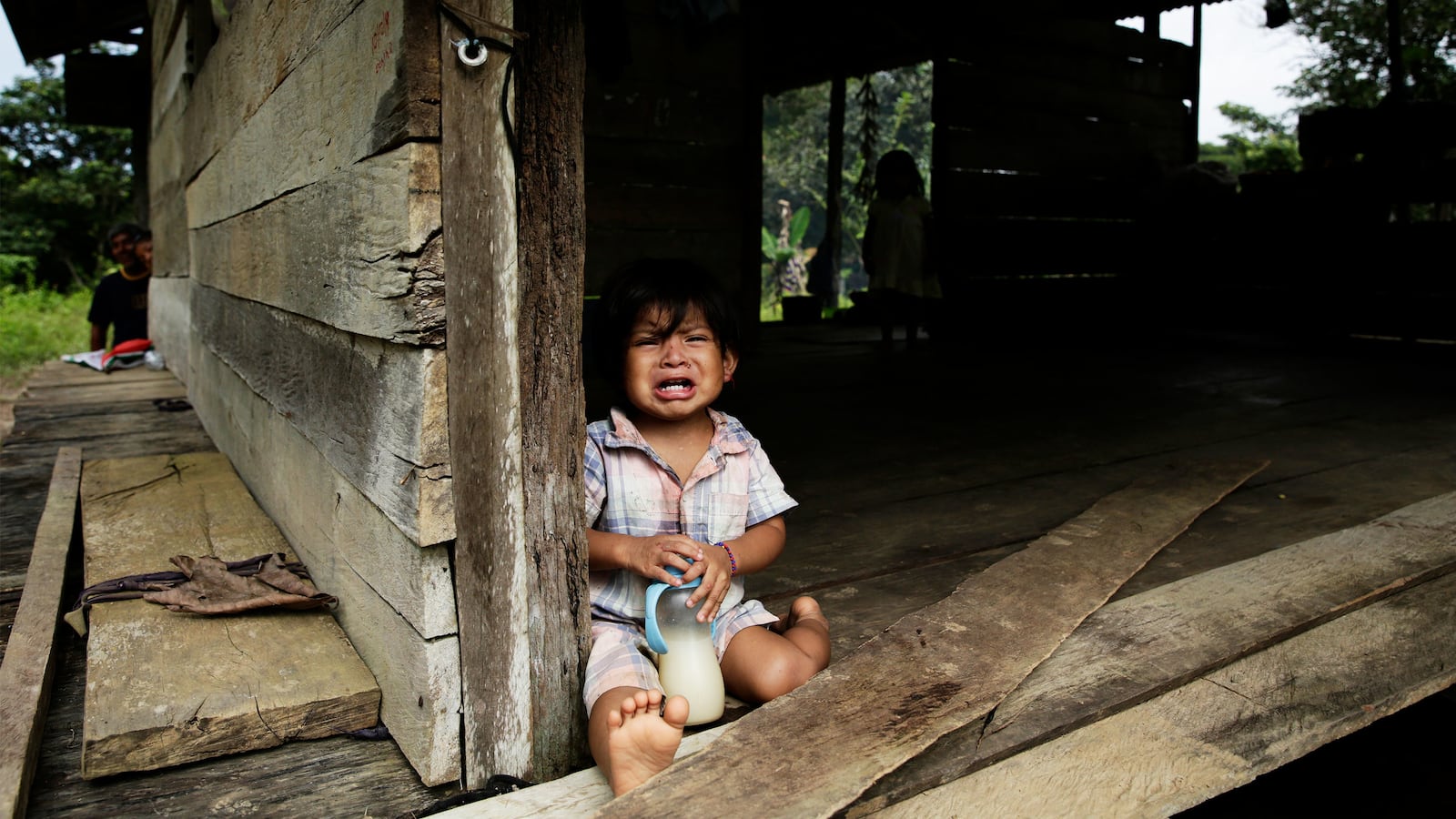CALI, Colombia—At first glance, the story looks almost too twisted to be true, like some Heart of Darkness spin-off for the post-post-colonial age.
Joseph Conrad himself couldn’t have dreamed up an episode more gruesome and vile than the one Panamanian police stumbled onto last Tuesday, deep within a semi-autonomous indigenous comarca (district) of the Ngäbe-Buglé people. Authorities had been alerted by a handful of villagers who turned up at a hospital outside the comarca showing signs of violent beatings, their mouths and tongues roasted with burning sticks, telling tales as best they could of strange rituals going on in the jungle.
So the cops were prepared to find something bad out there in the selva, District Prosecutor Rafael Baloyes told local journalists. They just didn’t know how bad it would be.
Upon arriving at the hamlet of Alto Terrón—situated in northwestern Panama and lacking both electricity and phone service—investigators found at least 15 people being tortured in a thatch-roofed structure belonging to a sect called “Nueva Luz de Dios” (New Light of God). The victims, including two pregnant women, were bound on the floor before a ritually slaughtered goat. At least one woman was naked, and had likely been raped. Meanwhile, some nine “priests” were exhorting the prisoners to accept “the word of God,” while striking them with knives and machetes.
“All these rites were meant to kill them if they did not repent of their sins,” Prosecutor Baloyes said. Armed officers broke up the ceremony, cuffed the crazed clergy, and freed the detainees. Because the area was so remote, helicopters had to be called in to evacuate the wounded.
About a mile from the “church,” police found a shallow grave that held seven bodies, apparently belonging to victims who had not repented fast enough. One of these was Bellin Flores, 33, who had been six months pregnant when she was murdered. Five of the others were Flores’ children, aged 1 to 11.
The five slain kids were the grandchildren of Mario González, 60, who stands accused of their deaths. The self-described “messiah” of the sect, González was also the father of the pregnant Flores, and allegedly killed her as well. The sixth victim in the grave, also a minor, apparently belonged to a family of the messiah’s unfortunate neighbors.
“One of [the priests] said that God had given them a message,” Baloyes said. It supposedly came in a dream, demanding that they cleanse the village through exorcism.
But others claimed the death cult wasn’t working on God’s behalf, at least not their God’s, at all.

A police officer photographs residents of the Ngabe Bugle indigenous jungle community of El Terron, Panama, on Jan. 17, 2020.
Arnulfo Franco/APAn elected leader of the Comarca Ngabé Buglé, Ricardo Miranda, issued a statement decrying the Alto Terrón sect as demonic and saying it went against the Christianity traditionally practiced in the region.
“We demand the immediate eradication of this satanic sect, which violates all practices of spirituality and coexistence found in the Holy Scriptures,” Miranda said.
Witnesses said the “New Light” group was relatively new to the area, having been active locally for about three months.
Satanic rites. Child sacrifices. A messianic leader who slays his own family. These are the wicked and depraved parts of the story that have been making headlines throughout the hemisphere–the sensational angles that may give Trumpistas and Wall Builders fresh fuel for fearmongering, new talking points, under their breaths of course, about “savage brown people” south of the border.

Burned clothes of people killed in a religious ritual in the jungle community of El Terron, Panama, on, Jan. 17, 2020.
Arnulfo Franco/APBut there’s another side to this tale that makes it even more Conradian, involving as it does traditional people’s cultural degradation, harsh economic conditions, and a hard-line, extremist version of Christianity exported to Panama straight from the good old U.S. of A.
Maybe the Ngäbe-Buglé are the ones who need the wall.
Theirs is the largest and most populous of Panama’s five indigenous districts. Some 96 percent of its 214,000 residents live in extreme poverty. There are few schools, clinics, and roads. Little local law enforcement. Almost no administrative infrastructure.
“These people are forgotten by the state,” says Kevin Sánchez, a professor of anthropology at the University of Panama, who has lived and worked extensively among the Ngäbe-Buglé. Government presence, he says, "is practically nonexistent.”
Sánchez describes the area where the sect was located as extremely isolated, inhabited by an ethnic subgroup who speak a distinct dialect of the Buglé language and refer to themselves as the Uga Chere (We People).
Since the colonial era groups like the Uga Chere have been hounded by land- and resource-hungry outsiders driving them ever deeper into the bush.
During the 1970s, the region was targeted by a wave of zealous evangelical missionaries who came Bible-thumping down from the States, according to Sánchez. They proselytized a dogmatic brand of Christianity that allowed little room for native people’s ancestral beliefs and cultural traditions. Already isolated by language and rugged terrain, the Uga Chere proved particularly vulnerable to such foreign influence.
“The missionaries pushed them to forget their own history. They confused the people, and destroyed their cultural memory,” Sánchez said.
In place of an age-old belief system, the Uga Chere began to practice a “fundamentalist, highly conservative religion” based on a literal interpretation of the Bible “that radicalized the people.”
In the absence of a strong state presence, indigenous religious figures in outlying communities eventually assumed de facto authority to settle disputes and distribute land and property. Ambitious leaders also used their newfound power for personal gain, in some cases ruling communities like the priest-kings of old.
“And now seven people are dead, and many more are hurt,” Sánchez said. “This is the ultimate consequence of abandonment [by the state] and exploitation [by the missionaries].”
As Conrad once wrote: “The belief in a supernatural source of evil is not necessary; men alone are quite capable of every wickedness.”
To that point, this self-proclaimed messiah and his fellow fanatics can’t hide behind their past religious victimization, nor pretend that the teachings of false prophets from afar exonerate their crimes.
Even so, said Sánchez, certain factors must be acknowledged by Panamanian prosecutors going forward, such as the fact that many of the Alto Terrón villagers—including victims, witnesses, and maniacal zealots alike—speak little or no Spanish. They will have limited understanding of a modern judicial system and how it differs from traditional methods of indigenous justice.
“Cultural roots need to be properly understood by authorities,” Sánchez said. “History must be taken into account.”








